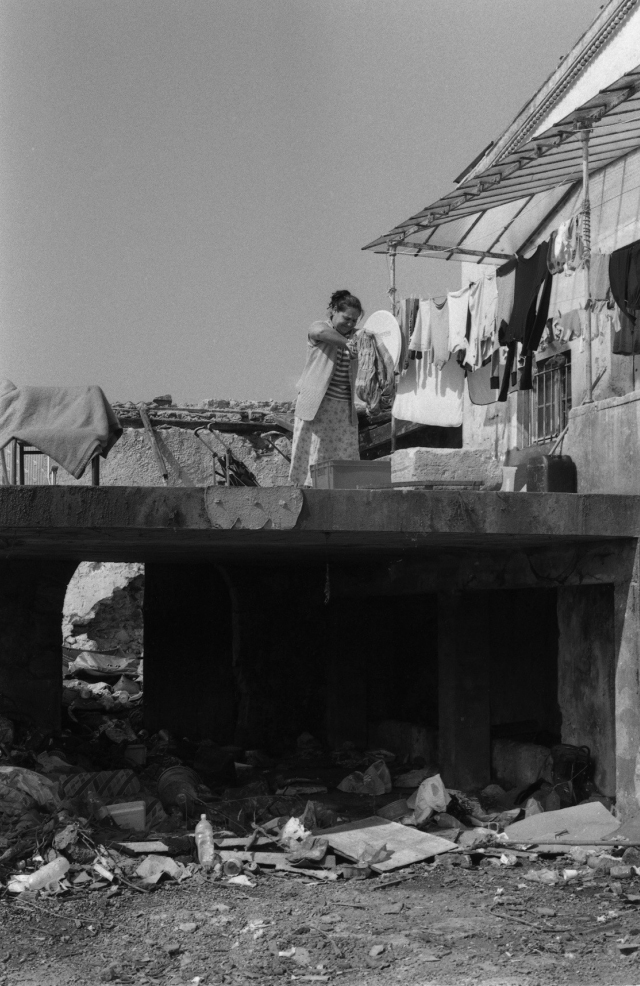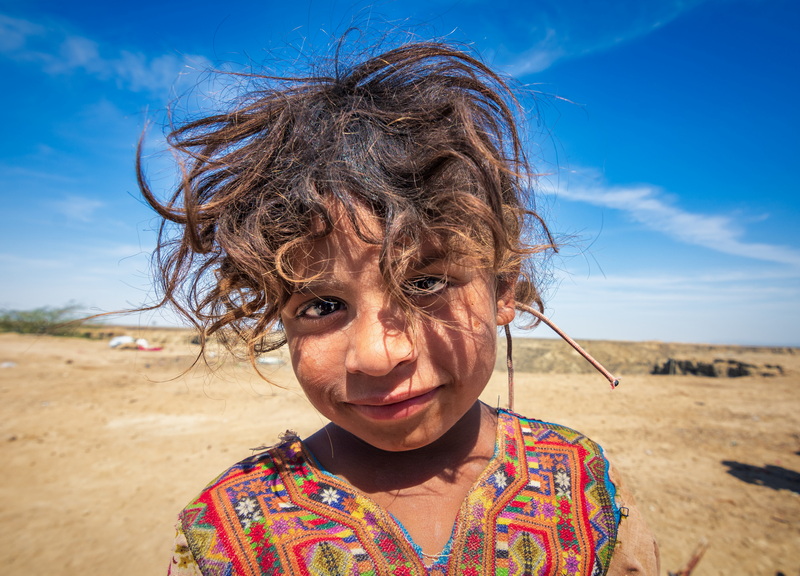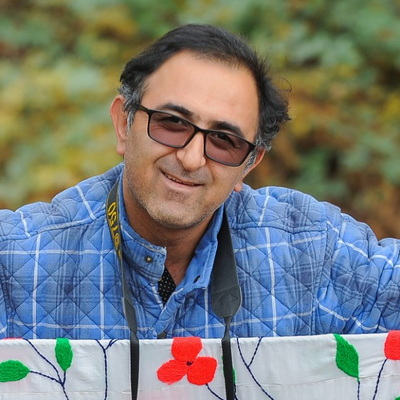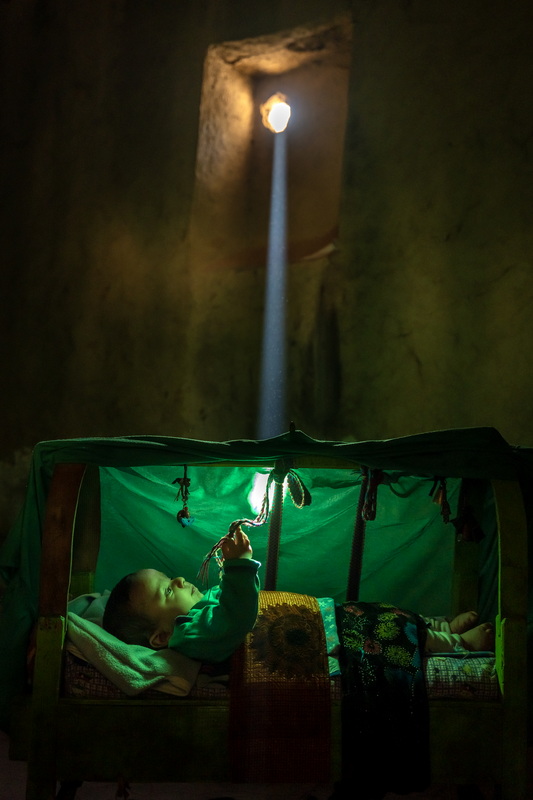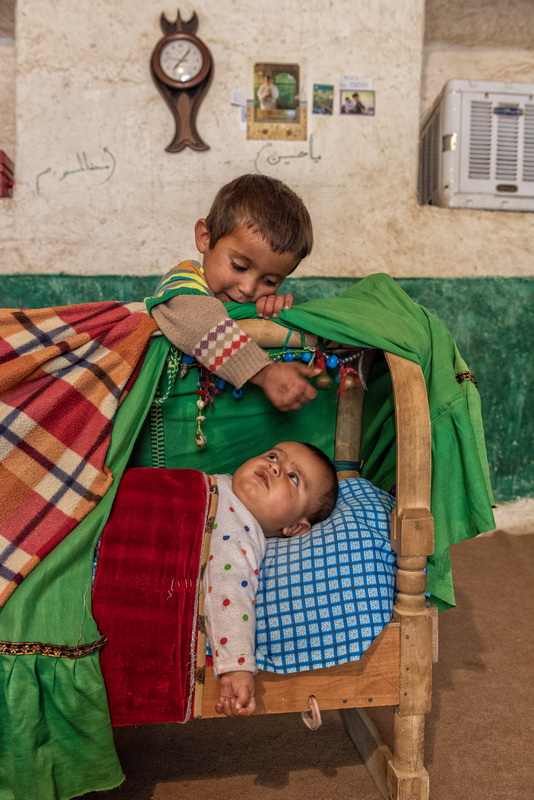Kloostertuin 2
Natalie Victor-Retali
Is this how Roma live?
Pardis Maaleki
Children of the forgotten borders
Eshagh Aghaei Mansourabad
Song of life
Kloostertuin – POI 30
In the garden behind the former Ursulines convent
via parking Vloeterstraat GPS 51.209813° NB 5.428673° OL
via gate Ursulinenstraat GPS 51.209632° NB 5.426287° OL
Natalie Victor-Retali | Is this how Roma live?
Natalie Victor-Retali, photographer and plastic artist
Artistic biography
Natali Victor-Retali (N_VR) has a background in dance. She took several photographic courses (evening classes at the ENSP in Arles, an apprenticeship with the photographic department of the museums of Bordeaux, apprentiships with renowned photographers during the Rencontres Internationales de la Photographie in Arles, etc.), with the aim of developing her view of the world visually: to bring out the little moments of poetry that life offers to those who know how to look at them. To do this, she works mainly on the ‘heaviness of the present’, that photographic and existential moment when everything revolves around the image to be born.
While barely pushing the boundaries of the particular present, she lets her perfectly subjective eye slip into it and brings back a fleeting moment, captured but not contained. The image is naked, unedited; it is all about the moment between capture by the artist’s eye and her camera. This in no way hinders reflection. Indeed, each of her series poetically addresses very current issues, sometimes with a touch of philosophy. Sometimes she indulges in a plastic gesture, and today she combines dance and painting in her danced canvases.
Ut Barley Sugar (a Parisian artist and performer) says of her work, “Natali Victor-Retali is someone who explores from the heaviness of the present. She reveals another dimension without staging it, she allows herself to be surprised by the present moment which, thanks to the precision of her instinct, unleashes in us a vision of truth. She composes her photographs like paintings; the creative process passes through an intermediate space of awareness: feeling and seeing the image between reality and the dream shown.
From this prior awareness of the image, Natali Victor-Retali creates series that immerse the viewer in a state of unconscious observation.
Is this how Roma live?
Photographic suite by Natalie Victor-Retali
I was invited to take these photos because I wanted to help the Roma community during a dispute with EDF (the entire squat was connected to the same pylon). What I want to show in these images is the constant effort made by this population, which is regularly ostracised, to live in dignity.
As you can see, this is particularly difficult for them, as it is so complicated to manage, for example, a single (cold) water supply for the whole squat (several dozen people)…
I arrived in the first fine days of spring, it was laundry day and it was high time because some children had nothing to wear to school because it had rained so much earlier and clothes can only dry outside, as indoors it is humid and there is little or no heating… Teachers were beginning to think about reporting children’s absences.
The communal toilets consisted of a tarpaulin modestly stretched over an open manhole. Michail, my guide, claimed to have found his bike ‘over there’; his father had collected enough planks and sheets of
plexiglas to build them a decent hut. But to keep warm, you had to ‘shred pallets’, and he was amazed that I didn’t need to shred pallets to keep warm… In the hut, an old computer, resurrected from the dead, seemed to be waiting for a bit of electricity to get it working again.
A little further on, a grandmother was proudly cooking, on an old tin cut in half, the meat that her son had collected from the rubbish bins at the neighbouring supermarket… A mother hung out her washing on the remains of a terrace in front of the ruined house she was living in with her baby, and cardboard insulated the beds from the damp walls… A little boy was gravely showing off the toy truck that another boy no longer wanted…
This is France in the 21st century!
Pardis Maaleki (Iran) | Children of the forgotten borders
This photo series offers an intimate and close-up look at the lives of children living in the vast expanse of Sistan and Baluchestan, on Iran’s eastern border. Despite their world of childhood dreams, these children face daily challenges. Due to limited food, inadequate healthcare, and difficulties accessing education, they are deprived of their basic rights.
Through these images, we aim to give a voice to the silent and unseen children who, despite their abilities and talents, are deprived of many opportunities due to their geographic location and existing inequalities. Each image strives to capture a moment of their lives and to narrate realities that are often hidden behind walls of indifference.
This series is an invitation to look more closely at these children; children whose only crime is living in a border region deprived of equal opportunities and facilities. May these images ignite a spark for change and hope for a better future.
Eshagh Aghaei Mansourabad (Iran) | Song of life
We have all experienced loneliness. But the different quality of this experience has created many different stories. Facing loneliness has been with man since the beginning of his existence, and after experiencing loneliness, man is no longer the same man he was before. Loneliness has the power to provide a new definition of human being with its capability. An image that is sometimes scary, eternal and mysterious.
In the context of the tradition with which I am connected, living takes possession of human beings as labor power, and this possession is freed from the constraints of gender. Where men and women work in the fields or with flocks of sheep somewhere far away from home, and home is where the population of children is usually large. And it can always be expected that a child or a baby who is unable to provide for his most basic needs, spends his loneliness in the hope of the return of these labor forces.
Fathers and mothers in a cradle that is generally made by themselves, put something sacred to make this loneliness safe for the baby. These sacred things may be Quran, prayer, talisman or something like that. A child’s life in this bed is to stand next to a controlled loneliness, the end of which is a human being who will make a very wonderful story.
In this photo collection, I have tried to share this loneliness with the reification connected to it with the modern man. A person who, after the Age of Enlightenment, has forgotten the pushed back shadow of myths, sagas and shamans in his collective unconscious, and I think oblivion cannot destroy its existence. This entity will one day erupt and human and loneliness will have a historical upheaval. The children in these pictures have not yet reached the point of knowing the world through mouth, but the world surrounds him in all lonely moments and teaches the future world in the language of Prescience.
I have seen the future of these children in a scary way in their fathers and mothers and I want the future to have a happier story for them.
Eshagh Aghaei Mansourabad


